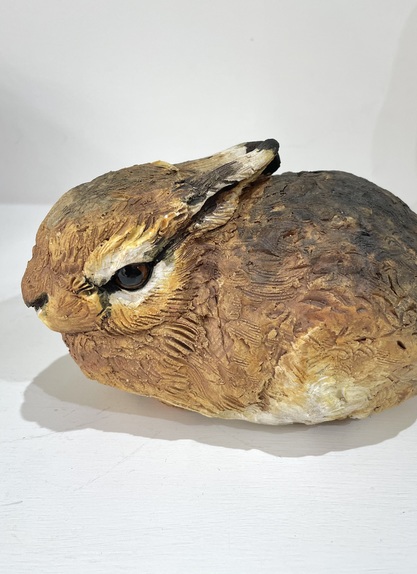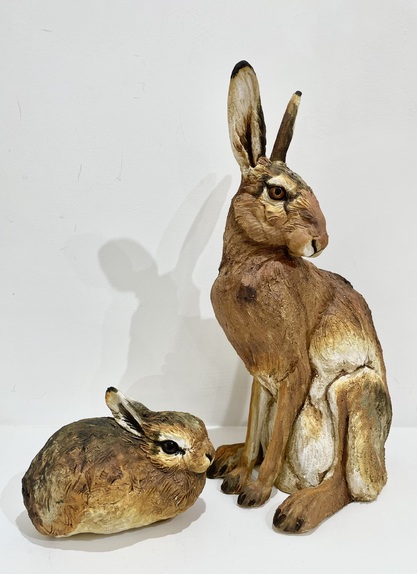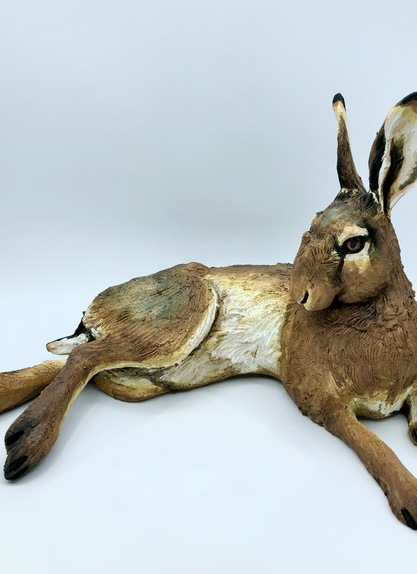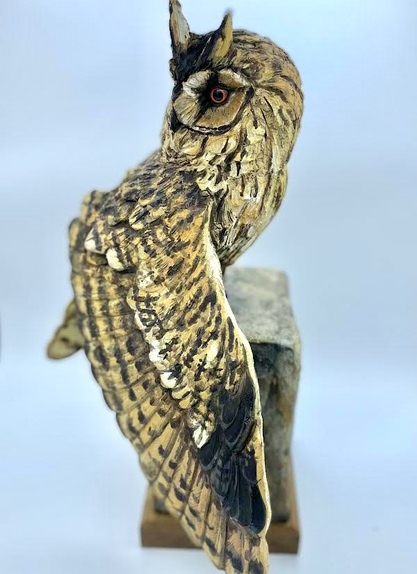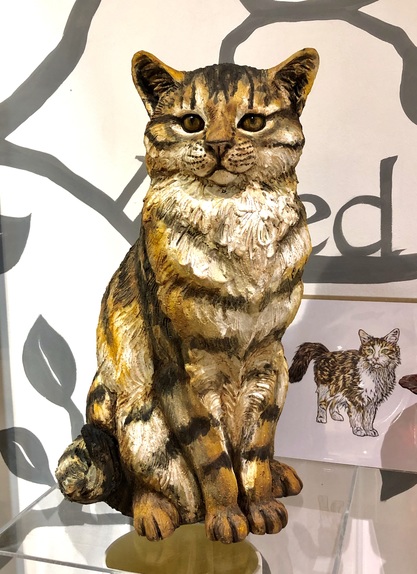About Karen Fawcett
Working from the home studio, I finish all of the sculptures myself, including final detailed clay work and colour painting/glazing. As well as researching existing projects, I am always looking for better ways of doing things and I like the challenge of undertaking new subjects. In addition to running the business we also have four children to look after, which can be quite challenging at times.
At the studio we are committed to creating lifelike sculptures using the British countryside as our inspiration. The first stage of the process is to choose a subject. This then needs to be researched using photographs, video material and study of an actual specimen if at all possible. Research is important to understanding the form of the subject, and getting the finer details of feathering and colour correct. Each piece is unique. We aim to capture not just the look, but also the spirit and personality of the subject, making it appear much more alive - as though it could move at any moment.
Some of our works are glazed to provide a more robust outdoor finish. Where more detailed colour is needed for lifelike representation of the original subject, we carefully paint the fired sculpture with weatherproof paints - although not as durable as an outdoor glaze, this finish is guaranteed to last at least 5 years.
I work with my family - Colin Fawcett completed his Master of Arts degree in 2015. He has since developed a working methodology for casting birds’ legs in pewter, especially for the larger birds. Michael Fawcett is responsible for the initial clay work and underpainting the fired result.
The production of the first sculpture in solid clay puts our detailed research to the test. When the sculpture is deemed acceptable, then a plaster mould is made. This gives us the ability to make consistent forms, as well as then being able to line the two halves of the mould with clay and make a hollow replica of the original sculpture (just like an Easter egg). If this were the end of the process, we could be accused of just making endless replicas using the mould. This is NOT what we do.
The clay cast loses detail during the moulding process, but here we are more interested in getting the body shape and size from the mould, not the final detail. Once the two halves are joined together, then the process of adding the fine detail begins. This includes the details of individual feathers or fur, the position of the head and limbs, and most important of all, the eyes. This is where the detailed research done earlier becomes invaluable. Each piece is crafted individually, so if you compare two thrushes, for example, there will be definite differences in the feathering and the colouring. This process also gives us the opportunity to position the head (or ears, etc.) at any desired posture, looking right, looking down, or left, for example. This is then fired at 1250`C for 6 hours, making the piece frost and weather proof. When cool, the piece is examined for flaws - only perfect pieces make it to the final process.
The fired pieces can now be either painted or glazed. We would prefer to glaze all our pieces, but this process is a bit hit and miss, and it does not gives us the fine colour control we want, to achieve a realistic end result. Consequently all our smaller birds tend to be painted, because fine colour detail is important for realism. Most of our mammals are glazed. Glazing involves a second firing to bond the glaze to the clay and invoke the chemical reactions that give the final glaze colours. After this stage the legs are glued into the body of the bird, or the wooden post is glued to the bird, using epoxy resin. Once set, unglazed items are under-painted (a base layer) before the final colour painting can be done, ensuring we achieve a faithful representation of the original specimen.

